Factors of Production Chapter Notes | Chapter Notes For Class 8 PDF Download
Introduction
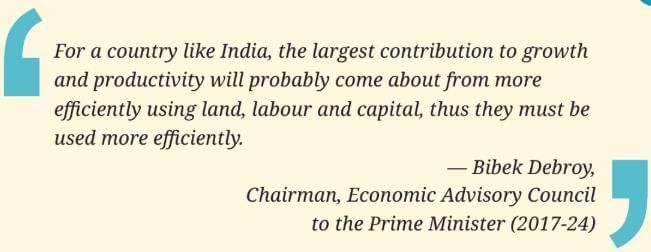
Everything around you, like clothes, shoes, or phones, is made through a process called production. This process uses resources, called factors of production, to create goods and services. This chapter explains the four main factors—land, labour, capital, and entrepreneurship—how they work together with technology, and the responsibilities in using them.
- Every product, like clothes, school bags, furniture, phones, or computers, goes through a production process before it reaches you.
- Businesses use resources or inputs, known as factors of production, to create goods and services.
- These factors also create opportunities for people to work and earn a living.
- In economics, factors of production are classified into four types: land, labour, capital, and entrepreneurship.
- Technology helps businesses produce more with the same or fewer resources.
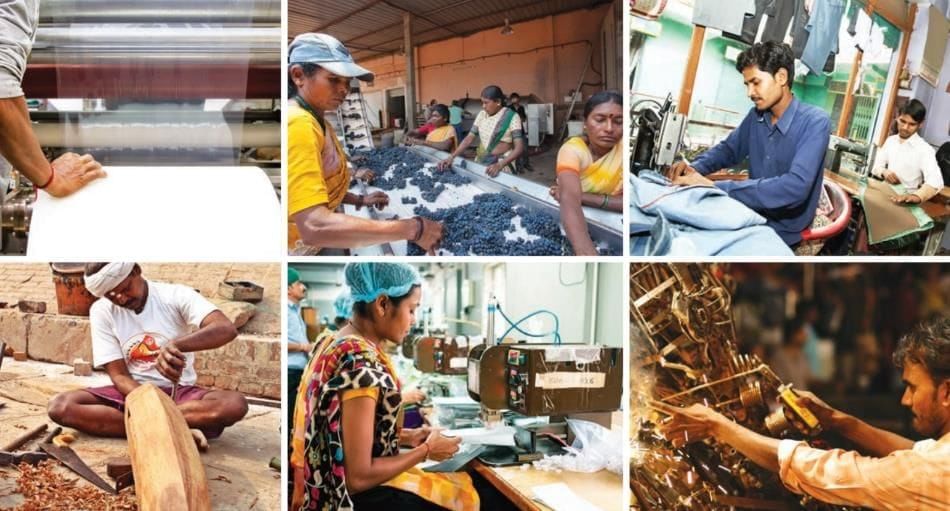 A glimpse at the production of some goods
A glimpse at the production of some goods
Factors of Production
Businesses combine different resources to make goods and services. These resources are grouped into four main types, which we’ll explore below.
Land (Natural Resources)
- Land in economics means more than just the ground—it includes all natural resources that help make products.
- Land covers geographical land and natural resources like soil, forests, water, air, sunlight, minerals, oil, and natural gas.
- Businesses either buy land or pay rent to use it for some time.
- Natural resources are gifts from nature, used in production, as discussed in the chapter on Natural Resources and Their Use.
Labour (Human Resources)
- Labour is the effort people put into making goods and services, using their bodies and minds.
- Labour involves physical and mental effort, like the work of carpenters, farmers, construction workers, teachers, or doctors.
- Different jobs need different levels of strength, knowledge, and skill.
- Everyone’s work helps create goods and services that society needs.
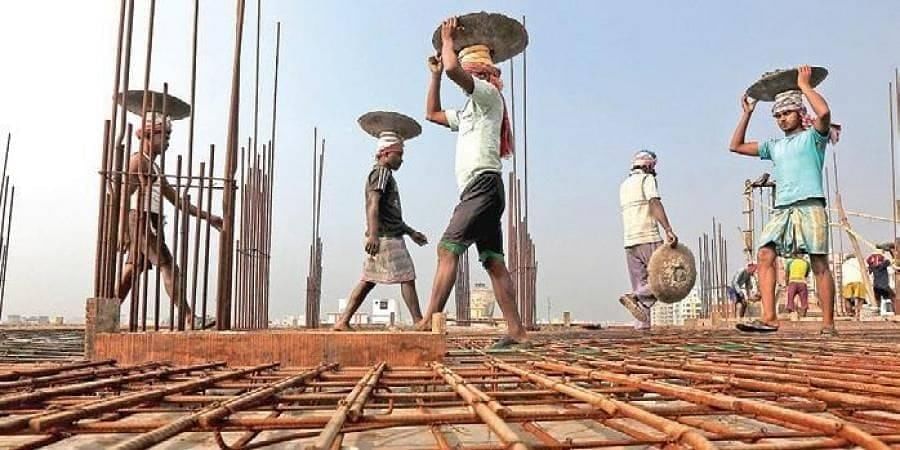 Construction workers
Construction workers
People as a Resource
- People are key to production because they use their skills and knowledge to create goods and services.
- Human beings apply knowledge, skills, and decision-making to produce goods and services, like a police officer keeping law and order, a scientist inventing technology, or a chef creating recipes.
- Labour is the physical and mental effort in production, while human capital is the special skills, knowledge, abilities, and expertise that make labour more effective.
- Human capital improves the quality and efficiency of work, requiring dedication to do a good job.
 People as Resource
People as Resource
Facilitators of Human Capital
(a) Education and Training
- Education gives people knowledge, from basic reading and writing to expertise in fields like engineering.
- School learning prepares students to solve real-world problems, like a civil engineering student learning to design roads and bridges.
- Training, like observing construction sites, testing materials, or learning safety rules, helps people apply their knowledge practically.
- Education and training prepare individuals to excel in their careers.
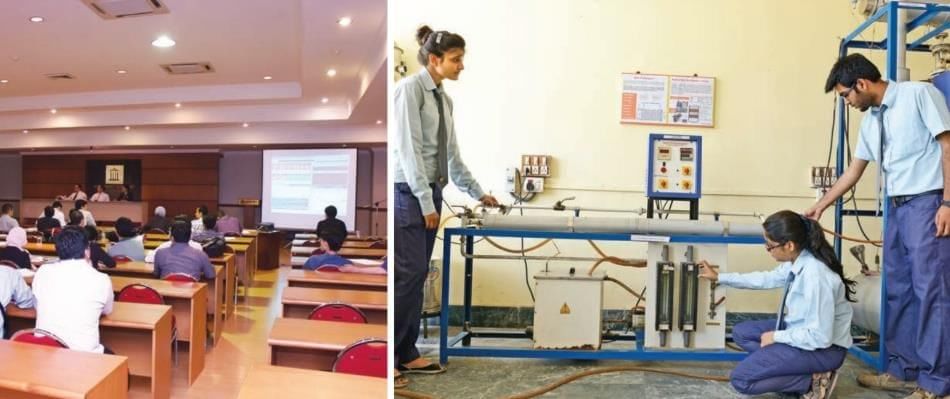 Education and training
Education and training
(b) Healthcare
- Good health helps children attend school regularly and learn better, supporting their brain development.
- Healthy workers can give their best, physically and mentally, work faster, be creative, and avoid missing work due to illness.
Social and Cultural Influences
- A culture of hard work and always improving, like Japan’s kaizen (continuous improvement) concept from the 1940s, helps countries progress.
- Japan’s kaizen has raised living standards by encouraging better ways of working.
- Germany’s work ethic, valuing punctuality, detail, and quality, has made it a leader in technology and manufacturing.
- These cultural qualities strengthen human capital and boost a country’s growth.
Challenges to Human Capital
- India has made progress in building human capital since independence, but there are still problems to solve.
- Literacy is important for skills and productivity, with India’s Adult Literacy Rate at 85% for males and 70% for females in 2023, according to World Bank estimates.
- The Economic Survey of India 2024 says 65% of India’s population is under 35, giving a young, productive workforce.
- A young population can bring a demographic dividend, where more working people support fewer dependents, helping the country grow businesses and improve living standards.
- To benefit from this, people need quality education, health, training, and skills.
- India has a rich history of skill-based knowledge and workmanship, but modern jobs require new skills.
India’s Ancient Skill Heritage
- Work as Worship:
Ancient Indians viewed work as a spiritual expression and an offering to either the deity or the recipient.
Devotion and perfection were key in every task or creation. - Tools as Sacred:
Tools were considered sacred and worshipped, a tradition still practised today as Shastra Puja or Āyudha Pūjā. - Art and Knowledge Combined:
Work was a fusion of Kala (art) and Vidya (knowledge).
Skills were passed down generationally and continually refined. - Shilpa Shastras:
Ancient technical texts called Shilpa Shastras provided detailed design guidelines for:
Sculptures, paintings, architecture, wooden crafts, and jewellery.
These texts included precise rules on posture, measurement, colour, and proportion.
Did You Know?
For centuries, families of skilled sculptors poured their hearts into crafting India’s magnificent temples, treating their work as sacred worship. Mastering new techniques through relentless practice, they pursued excellence without ever expecting to see the final masterpiece!
Stitched Shipbuilding in Ancient India
- Over 2000 years ago, Indians developed a unique shipbuilding technique.
- Instead of nails, wooden planks were stitched together using strong cords.
- This method made the ships flexible, ideal for navigating the rough waters of the Indian Ocean.
- These stitched ships were used for maritime trade and cultural exchange across the Indian Ocean region.
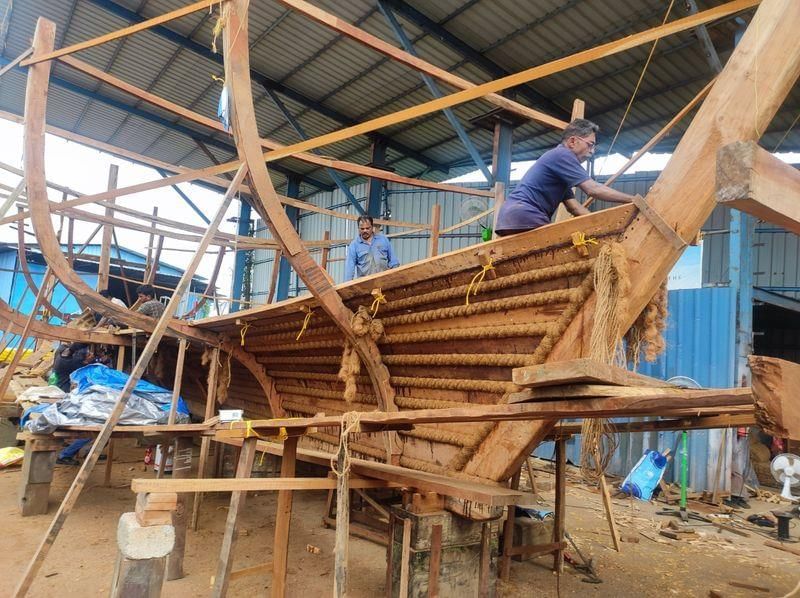 Re-creation of a stitched ship
Re-creation of a stitched ship
Capital
- Capital includes money and tools that businesses need to make goods and services.
- Capital comprises monetary resources and durable assets like machinery, tools, equipment, vehicles, vending carts, computers, shops, factories, and office buildings.
- For example, a business owner like Ratna needs money to rent land, buy furniture, or get kitchen equipment—these are all capital.
- Businesses often start with personal savings, family, or friends’ help, like Ratna did, but may need loans from banks to cover more costs.
- Ratna paid interest and part of her bank loan over time to start her business.
- Large companies raise money through the stock market, where they sell shares to the public, offering a share of profits called dividends.
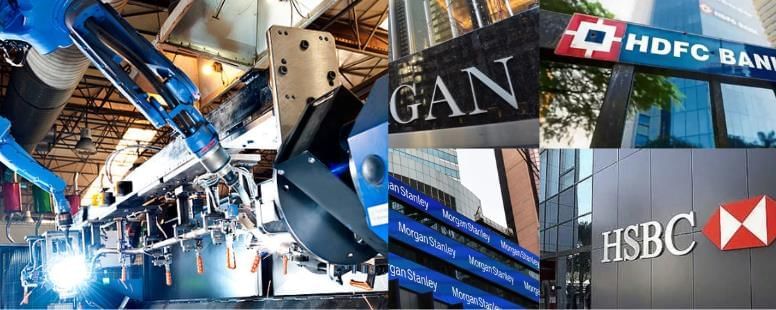 (Left) Machinery and (Right) Bank for Loans
(Left) Machinery and (Right) Bank for Loans
Entrepreneurship
- Entrepreneurship is about starting a business or creating something new to solve a problem.
- An entrepreneur comes up with an idea, takes risks, gathers land, labour, and capital, and works hard to make their idea successful.
- Entrepreneurs bring new products and services to the market, benefiting society and creating jobs.
- They feel satisfied seeing their dreams come true and serving people.
- An entrepreneur identifies a problem and finds an innovative solution, combines factors of production, takes risks by investing money and time, makes key business decisions, and contributes to society’s welfare through innovation.
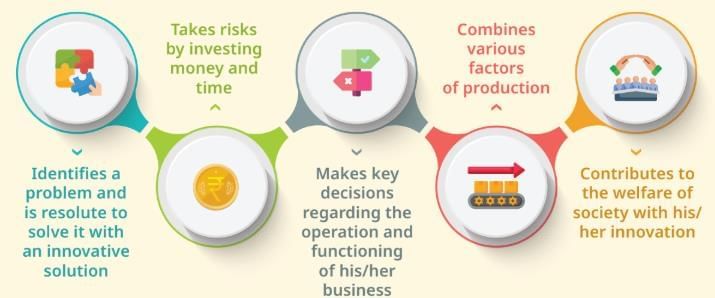 Tasks performed by an Entrepreneur
Tasks performed by an Entrepreneur
J.R.D. Tata – The Man Who Dreamed Big for India
- Jehangir Ratanji Dadabhoy (J.R.D.) Tata was born in 1904.
- Became the head of the Tata Group, one of India’s largest business houses.
- Believed businesses should serve society, not just earn profits.
- Founded India’s first airline, Tata Airlines, in 1932, which later became known as Air India.
- Under his leadership, the Tata Group expanded into steel, cars, power, and chemicals.
- Known for caring about his workers and ensuring good working conditions.
- Admired for his vision, hard work, and honesty.
- Awarded the Bharat Ratna in 1992 for his service to the nation.
 JRD Tata
JRD Tata
Technology: An Enabler of Production
Technology is the use of scientific knowledge to make production easier and better. It helps people and businesses do things faster and create new opportunities.
- Technology means applying scientific knowledge, like a camera turning light into digital images.
- All production uses some form of technology, including old tools like pulleys and wheelbarrows that are still used today.
- New technology, like UPI for quick payments, weather updates for farmers, or GPS for finding short routes, makes life easier.
- New technology often replaces older methods, like email replacing letters for faster, cheaper communication, but some old technologies stay useful.
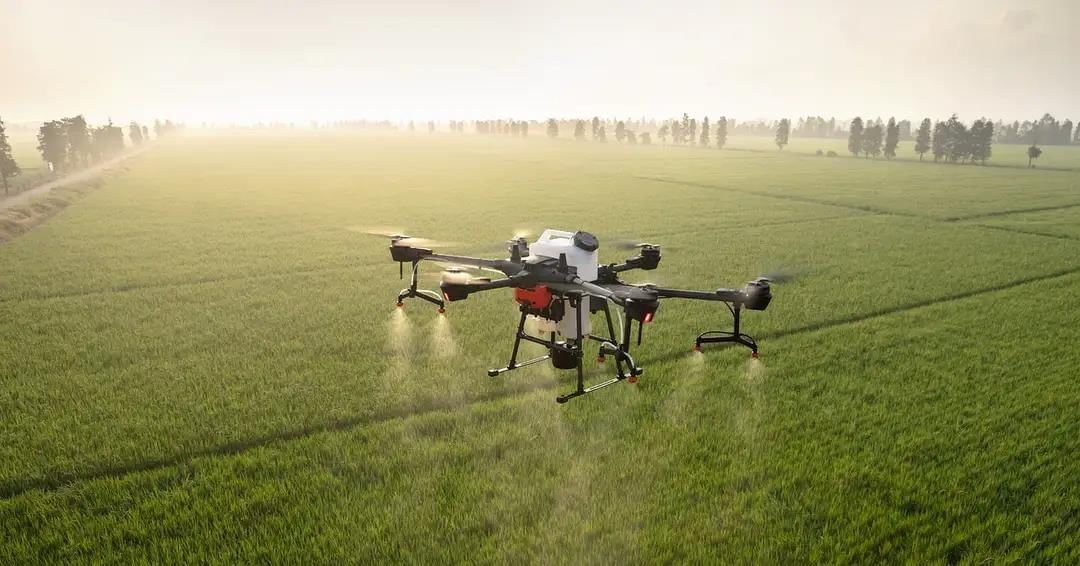 Drones spraying Fertilisers
Drones spraying Fertilisers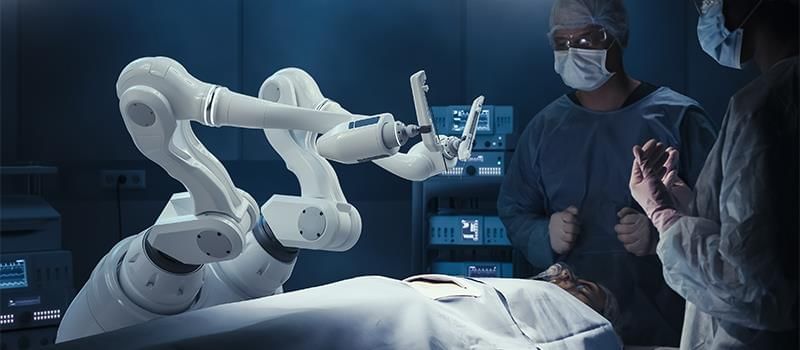 Robots assisting in Surgical Procedure
Robots assisting in Surgical Procedure
Technology Paving the Way for Accessing Knowledge, Skills, and Job Opportunities
- Government platforms like SWAYAM offer free online courses from Grade 9 onwards.
- Operates via MOOCs (Massive Open Online Courses).
- Covers diverse subjects such as robotics, aquaculture, textile printing, and more.
- Enables flexible, self-paced learning from anywhere, even while working or studying elsewhere.
- National Career Service (NCS) is a government job portal.
- Connects people to employment opportunities in varied sectors—from plumbing to accounting.
- Technology has removed geographical barriers, offering wider access to education, skill-building, and employment, both in India and abroad.
 Online Learning
Online Learning
How are the Factors Connected?
The factors of production—land, labour, capital, entrepreneurship, and technology—work together to make goods and services, and how much of each is used depends on what’s being made.
- The proportion of each factor varies by product; agriculture, construction, and handicrafts use more labour (labour-intensive), while semiconductor chips or satellites need more capital and machinery (capital-intensive).
- These factors complement each other; if one is missing or misused, production can stop or become inefficient.
- New techniques, like machines in agriculture or 3-D printing in textiles, can reduce labour use or revive traditional crafts for larger markets.
- Businesses get resources from different places and combine them to produce goods and services, connecting resources across locations.
- Supply chain problems, like disruptions during the COVID-19 pandemic from relying on far-off sources, can stop production if local resources aren’t used.
- Human effort, like that of engineers and project managers, is needed at every stage to design, supervise, and improve products, with entrepreneurs guiding how resources are used.
Did You Know?
In 2025, India shines as the world’s second-largest mobile phone manufacturer, trailing only China! This booming industry powers innovation and growth, showcasing India’s tech prowess on the global stage.
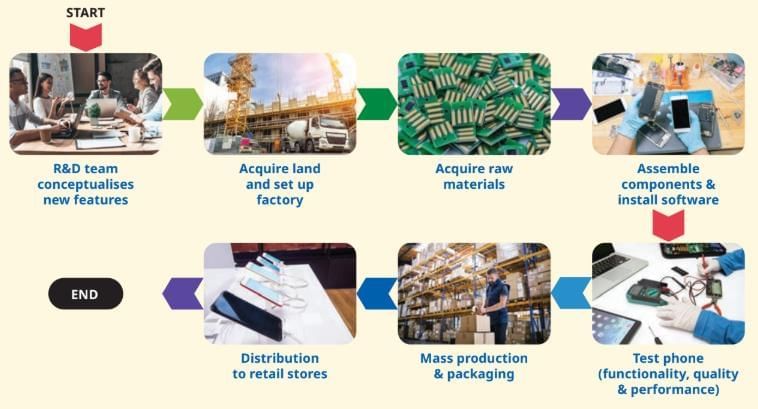 Process of Mobile Phone Assembly
Process of Mobile Phone Assembly
Responsibilities towards Factors of Production
Using resources to make goods comes with responsibilities to protect nature and treat workers fairly, so we don’t harm the environment or people.
- Natural resources like land, water, and minerals are limited; overuse, like leather factories in Tamil Nadu polluting rivers or unrecycled smartphones leaking harmful substances, can hurt people, animals, and plants.
- Producers must use resources carefully to meet today’s needs without making it harder for future generations, reducing waste and pollution.
 Industrial Wastewater Recycling
Industrial Wastewater Recycling - Businesses must ensure fair pay and safe working conditions for workers.
- They should invest in training and education to help workers gain skills to stay competitive.
- Laws protecting workers’ rights, like fair treatment, no discrimination, and benefits like health care or paid leave, must be followed.
- Businesses should care about society and nature through Corporate Social Responsibility (CSR), reducing pollution, supporting local communities, and treating workers and customers with respect.
Did You Know?
India blazed a trail in 2014 as the first nation to enact a Corporate Social Responsibility law, requiring companies to invest 2% of their average profits from the past three years into impactful social initiatives, setting a global benchmark for responsible business!
Key Points to Remember: Before We Move On
- Land, labour, capital and entrepreneurship are factors of production that are used in a particular proportion to produce goods and services. These factors complement each other and are interconnected.
- Human capital is the knowledge, skills, experience, and ability of individuals that contribute to their ability to perform work and create economic value. It is influenced by education, training, health, use of technology, and social context that make people more productive in the workforce.
- The resources help in the production of goods and services that serve society and need to be preserved and utilised judiciously.
FAQs on Factors of Production Chapter Notes - Chapter Notes For Class 8
| 1. What are the four main factors of production? |  |
| 2. How does technology serve as an enabler of production? |  |
| 3. In what ways are the factors of production interconnected? |  |
| 4. What responsibilities do businesses have towards the factors of production? |  |
| 5. Why is understanding factors of production important for economic studies? |  |

















